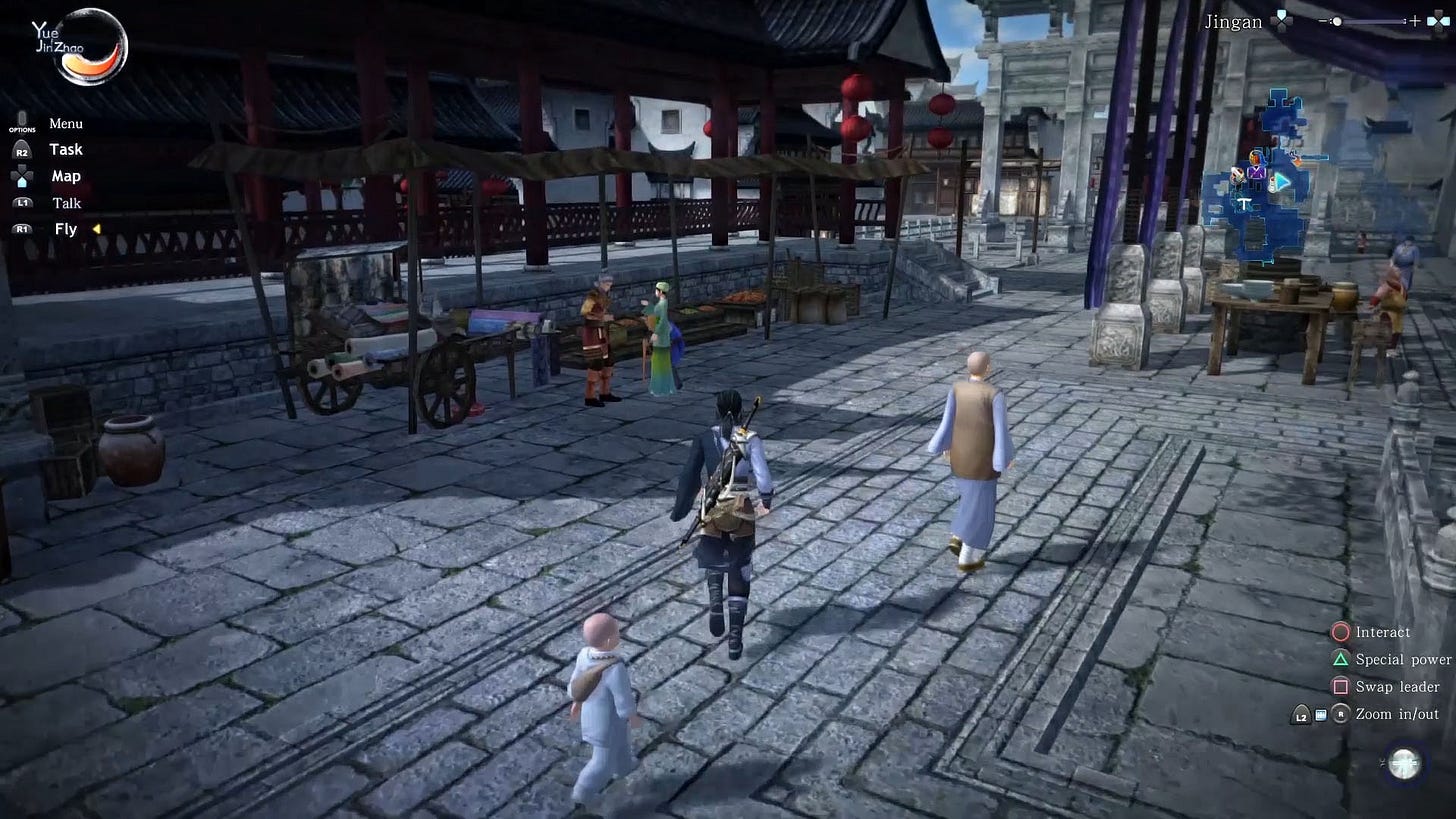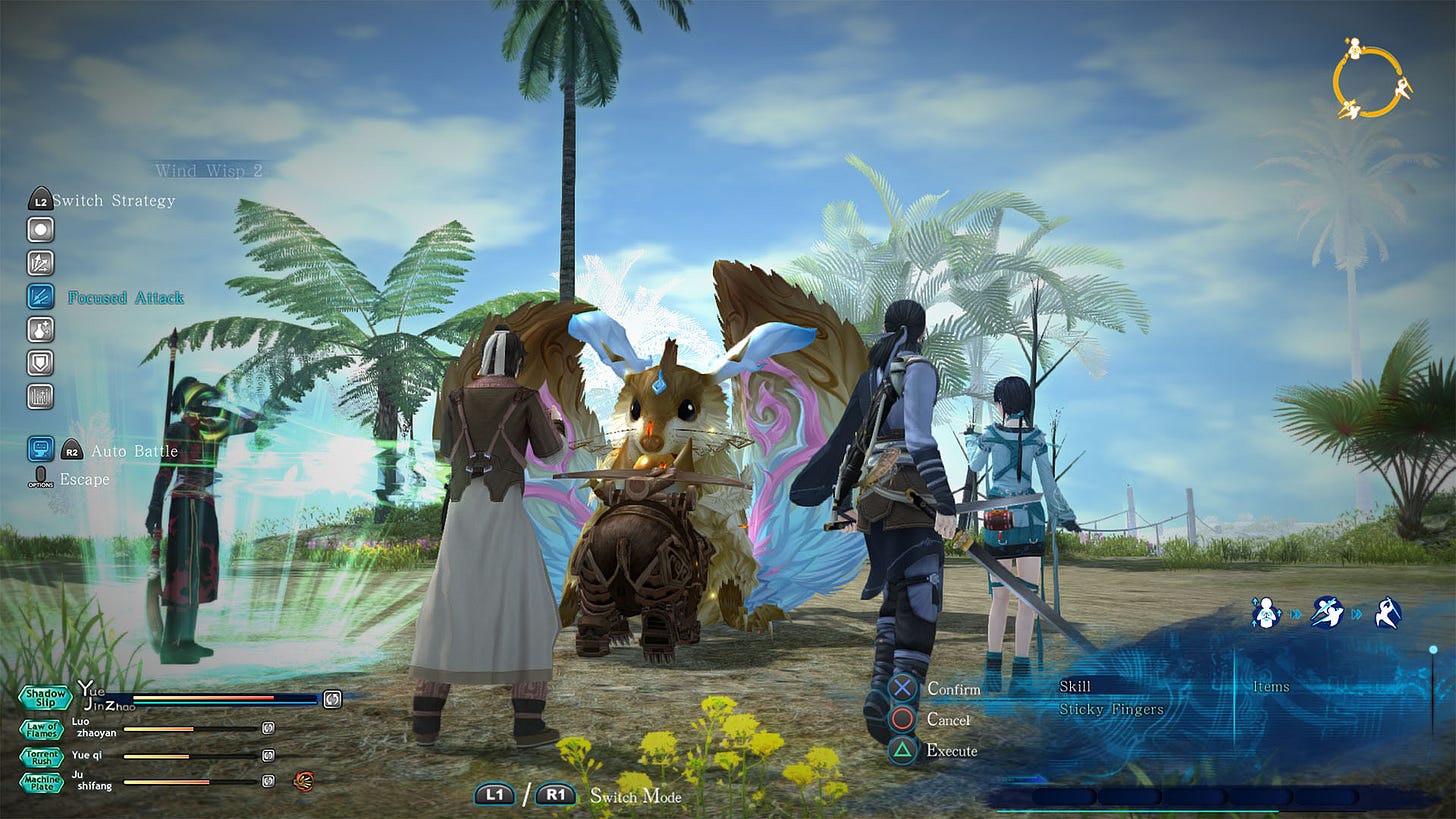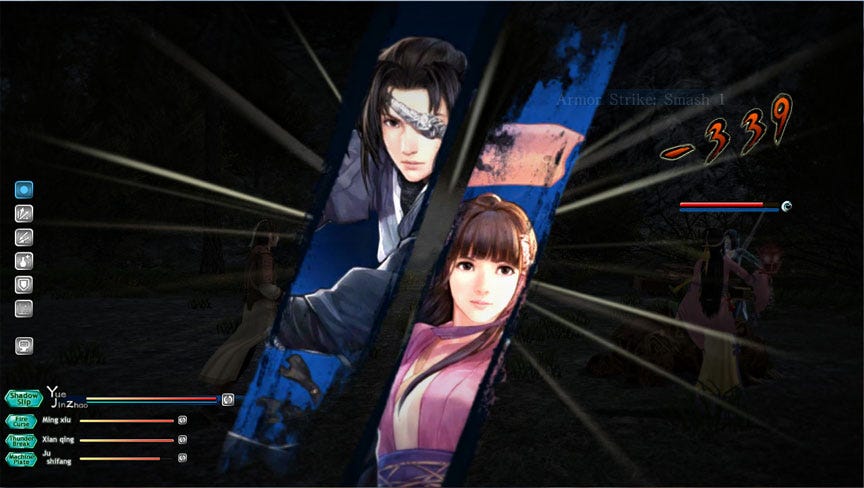Sword and Fairy 6, an inspired, if janky, journey to Jianghu
Developer: Softstar Entertainment
Publisher: EastAsia Soft
Director\producer: Luan Jing
Scenario writer: Shen Rongrong
Soundtrack: Zheng Zhihao, Wu Xinrui, Zhou Zhihua
Character designer: Zhao Yilong
Genre: Turn based RPG
Story progression: Linear
Platform: PC, PS4
Country: China
Release date: 8\7\2015 (PC), 2\4\2019 (PS4)
Status: Completed on 23\5\2021
As someone who always had a lot of interest for East-Asian RPGs from China and Korea, the lack of English localizations for the Sword and Fairy and Xuan Yuan Sword franchises, both developed by Taipei-based Softstar Entertainment and often considered as something like China's Dragon Quest and Final Fantasy, albeit with huge differences given their longtime focus on PC-exclusive development and their modest budget, was always a shortcoming that I hoped to see fixed one day.
While Xuan Yuan Sword is the oldest among those franchises, with its first entry being released in 1990, predating Sword and Fairy by five years, Sword and Fairy itself, also known as Chinese Paladin, is one of the oldest and most beloved Chinese videogame series, even inspiring a number of Chinese drama adaptations due to its popularity (in fact, Sword and Fairy 6’s own adaptation, Qi Jin Zhao, was released just a few months ago). Both series, in their long histories, have tried to portray interesting stories with a varying degree of Chinese fantasy elements and historical settings, with Xuan Yuan Sword 3 (later localized on PC and Switch) being among the most interesting due to its depiction of a Frankish Knight sent by King Pepin the Short, father of Charlemagne, on a mission that will see him travelling from Venice to the Chinese Tang Empire.
It's no wonder, then, that when Sword and Fairy 6 was finally localized, the first numbered entry in the series to get an English translation, I was happy to delve into its Wuxia-styled adventure, a genre usually associated with martial artists fighting against supernatural or human enemies in various quasi-historical contexts, to see what I had been missing so far. What I found when I finally managed to give the game a chance back in 2021, is somewhat different from what I expected, not just because it was also leaning a bit on Xianxia narrative archetypes (that is, featuring characters that are cultivating their own inner powers to gain immortality and an ascended status, often linked with a mix of Buddhism, Taoism and other Chinese mythological references, sometimes mixed with esoteric and Gnostic callbacks), even if not fully so, but also because it was much more engaging than I had expected despite having a generous helping of shortcomings, mostly due to its low budget.
First of all, in order to avoid technical issues burdening the rest of this analysis, let's admit that the PS4 port I played, based on the PC original released some years before which, apparently, was itself full of issues, is one of the jankiest games I had the pleasure to play on that platform. If you're disturbed by things like random slowdowns, disappearing textures, characters stranded in the void until you restart the game and other quirks like those, Xuan Yuan Sword 6 is likely a game you won't be able to stomach. As for me, having to work around annoying bugs to progress the story had the bizarre effect of making me that more invested into seeing it through, which is roughly the same mindset I had while playing lots of CRPGs back in the days, or, some years ago, my dear Arcturus' English-patched version.
Happily, Sword and Fairy 6 was more than able to compensate for its slew of bugs and technical issues. Set in a world inspired by the traditional tenets of Jianghu, the term used in Chinese popular entertainment to define the Wuxia settings broadly inspired by ancient China but not necessarily moored in real historical contexts, Sword and Fairy 6 starts with a couple of amnesiacs, Yue Jinzhao and his sister Yue Qi, joining local nobleman Luo Zhaoyan to fight a cell of a secret sect with extremely shady objectives in Zhaoyan's own fief, Yinghul Keep.
Their fight against this sect propels them to join forces with the True Martial Alliance, a league of fighters based in Jing'an city that acts as the de-facto authority in the region (the lack of any Imperial representative in Sword and Fairy 6 is extremely noticeable, compared to most Wuxia settings) and to slowly recruit more allies, like timid Alliance artificer Ju Shifang, hermit sorceress Ming Xiu and her suave demonic Uncle, Xiangqing, who brings his own flair of Xianxia to the game due to his emphasis on the importance of cultivation and his detached, aloof viewpoint.
This unlikely group will slowly unravel the mystery of the two protagonists, of the legendary Nine Springs and of the relationship between the many factions acting in the world, including the Piscis, one of the few depictions of merfolks in videogame RPGs that tries to do something more with their background than the bare minimum, discovering how their world's own cruel logic can turn even the most apparently heartless acts into different means to reach coherent ends, rather than purely evil. In fact, by the end of the story, I ended up emphatizing with a certain antagonist even more than with the playable characters themselves, something I wouldn’t really have expected given the circumstances. Despite being influenced by certain JRPG archetypes, the story, and the way it was told, highlighted some marked tonal differences between this game and its Chinese roots compared to most Japanese-developed RPGs, with a certain amount of melancholy and a peculiarly poignant tone that I didn’t initially expect.
The protagonists also fully delivered on their own quota of twists and character development: aside from a single revelation that was so comically telegraphed I think it wasn't even meant as a surprise, most of the party actually experienced a noticeable and rather realistic growth during the taxing experiences they were subjected to, and, when some of those ended up bringing about romantic developments, they felt organic and earned rather than gratuitous, something rare in a landscape where dating-sim mechanics are often more common than actual romance. The ending was also quite poignant and well executed, and it curiously reminded me of a completely different game, Koei’s Trinity Souls of Zill O’ll action JRPG, developed by Omega Force, which I had almost forgotten in the last decade.
As a game blatantly relying on its narrative and dialogues, with noticeably long in-engine cutscenes ambitiously (if sparingly) punctuated by unexpected animated sequences, some optional dialogues heavily inspired by Tales' skits as handled in the Team Symphonia-style games and a generally linear progression, Sword and Fairy 6 unfortunately ends up being let down a bit by its uneven localization. While understanding even the most complex parts of the game's story or lore is never an issue, dialogues are sometimes awkward and often lack in flavor, something that could have likely been avoided by subjecting the script to an additional editing pass.
Then again, some may argue having a dry translation, with all its obvious cons, can also have its own merits in this context, as an excess of editing could have also smoothed out some of the differences between this Chinese RPG and its Japanese counterparts. In a way, that the game’s story still manages to impress despite being hampered by such issues shows how carefully it was crafted and how much potential it had to begin with, making a great first impression for those new to the franchise.

Despite the game's linearity, cities and dungeons do have plenty of secrets (including a bizarre event where a cat version of Jinzhao sings an upbeat theme song completely out of the blue, which I can only imagine is some sort of running gag or reference in the franchise I was too green to understand) and treasures to find, especially due to the ability to reach lots of unexpected places by jumping around in unexpected places and using special character skills to your advantage, even if slowdowns and erratic controls can sometimes make this unnecessarily frustrating, same as some dungeons having layouts that are far from easy to navigate not because of design choices or puzzles, but due to the aforementioned poor controls, lack of readability and overall janky nature. As mentioned before, character abilities are also relevant to dungeon design and traversal, as they’re often used to navigate the dungeons by solving puzzles and opening up new paths.
Combat, on the other hand, possibly inspired by some traits of Final Fantasy XIII’s Command Synergy Battle system as envisioned by Toshirou Tsuchida, is a rather harmless mix of traditional Active Time Battle staples with the added quirk of being able to string different moves by spending Action Points and executing flashy Ultimate moves, somewhat reminding of a number of traits Gust ended up implementing years later in the Atelier Ryza trilogy, even if auto-battle is still an option for those who don't want to delve too much into the game's systems.
Despite some bosses being rather challenging, the game is fairly easy and grinding should never be an issue, not to mention how Sword and Fairy 6 ends up being quite friendly by letting the whole party share both experience points and the Soul Points used to unlock the main customization option, a constellation-like skill tree (also similar to Final Fantasy XIII’s Crystarium, itself a simplified Sphere Grid) which is actually quite linear itself. The game also features a rather simple crafting system which, like most of the game’s core mechanics, never overstayed its welcome or detracted from the game’s main focus, which is something I can definitely appreciate in a title so slanted toward its story. Also, there are actually a number of uncommon customization options, allowing, for instance, to represent the equipped weapon as any you have in your inventory during combat.
All in all, despite its technical shortcomings and a localization that didn’t do its excellent script any favor, from a purely narrative standpoint Sword and Fairy 6 is still the boldest and most ambitious Chinese RPG I've played so far, and one of the few heavily story driven turn based RPGs I've seen in the last few years attempting to tell a genuinely dramatic story without either going for cuttroath dark fantasy tropes or trying to cheapen it too much with some unearned, last-minute deus ex machina saving the day. Compared to other Chinese RPGs, it could also be more accessible for western players new to Chinese entertainment at large because of its rather unusual lack of references to Chinese history, even compared with already history-light titles like Xuan Yuan Sword 7, which I played soon after.
After completing Sword and Fairy 6, I admit I was worried its muted reception could dissuade Softstar from localizing more of its lineup, but I was proven wrong soon after, as the game was either successful enough (or Softstar’s expectations were low enough to begin with) to justify translating not just Sword and Fairy 7, but also their other franchise, Xuan Yuan Sword, which saw English releases for its seventh and even its third entry, that Mists Beyond the Mountain I raved about before, not to mention a new port of Xuan Yuan Sword: Gates of Firmament, which in fact saw a PS4 Asian English release even before Sword and Fairy 6 but, unfortunately, was never available either phsyically or digitally in the western markets.
While the recent news about Softstar ceding the rights to the Sword and Fairy and Xuan Yuan Sword franchises to other Chinese companies are troubling to say the least, and something I think Softstar could end up regretting given the growing international markets for both series, Chinese gaming is undoubtedly on the rise thanks to titles like Wukong, Genshin Impact, Zenless Zone Zero and others, not to mention a plethora of more niche titles like Wandering Sword or Sailing Era, and it seems single player Chinese RPGs, even if they still lack a comparable mainstream success, are also here to stay.









